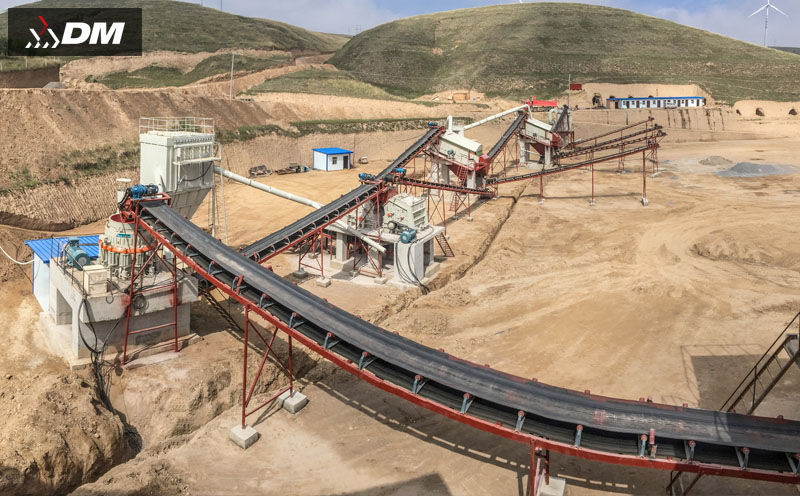
How to calculate crusher efficiency?
The core of crusher efficiency calculation is the ratio of actual processing capacity to theoretical processing capacity. Meanwhile, it needs to be comprehensively evaluated by combining energy consumption, product quality and other dimensions, with slightly different calculation focuses in different scenarios.

I. Core Calculation Indicator: Processing Capacity Efficiency (Most Commonly Used)
Processing capacity efficiency is the key to measuring whether a crusher meets the designed production capacity. The formula is as follows:
-
Actual Processing Capacity: Refers to the amount of materials crushed by the equipment per unit time during actual operation, usually expressed in "tons per hour (t/h)".
Calculation method: Record the total weight of crushed materials within a certain period (e.g., 1 hour) and divide it by the time directly. Note: Non-effective working hours such as equipment shutdown and material blockage should be excluded, and only data during normal crushing periods should be counted.
-
Theoretical Processing Capacity: Refers to the rated processing capacity provided in the equipment design manual or by the manufacturer, which should be determined based on material characteristics (e.g., hardness, humidity) and equipment parameters (e.g., crushing chamber size, rotation speed).
If there is no manufacturer's data, it can be estimated by empirical formulas (taking jaw crusher as an example):
Theoretical Processing Capacity (t/h) = K × Crushing Chamber Width (m) × Feeding Port Height (m) × Equipment Rotation Speed (r/min) × Material Bulk Density (t/m³)Among them, K is the correction coefficient (usually 0.1-0.2, adjusted according to material hardness; take a smaller value for hard materials and a larger value for soft materials).
II. Auxiliary Evaluation Indicators: Energy Consumption and Product Quality
-
Crushing Unit Energy Consumption Efficiency: Measures energy economy; the lower the unit energy consumption, the higher the efficiency.
Formula:
Unit Energy Consumption (kW·h/t) = Actual Power of Equipment (kW) ÷ Actual Processing Capacity (t/h)Reference standard: When crushing medium-hard materials such as limestone, the unit energy consumption of jaw crushers is usually 0.5-1.5 kW·h/t, while that of gyratory crushers can be as low as 0.3-1.0 kW·h/t due to higher efficiency.
-
Product Particle Size Qualification Rate: Evaluates whether the crushing quality meets the standards; the higher the qualification rate, the lower the secondary crushing cost and the higher the overall efficiency.
Formula:
Particle Size Qualification Rate (%) = Weight of Materials with Qualified Particle Size (t) ÷ Total Weight of Crushed Materials (t) × 100%Requirement: The qualified particle size range (e.g., ≤20mm) should be determined according to subsequent processes (e.g., grinding, sand making), and the proportion of qualified materials should be counted through screening tests.
III. Calculation Precautions
- Unify Units: Ensure the unity of units such as weight (ton, kilogram), time (hour, minute), and power (kilowatt) to avoid calculation errors.
- Multiple Sampling: For actual processing capacity and particle size qualification rate, multiple samples should be taken for measurement (3-5 groups of data are recommended), and the average value should be taken to reduce accidental errors.
- Exclude Interfering Factors: During calculation, efficiency fluctuations caused by uneven feeding, equipment failures, excessive material humidity (prone to blockage) and other factors should be excluded to ensure that the data reflects the real performance of the equipment.





We will answer your email shortly!